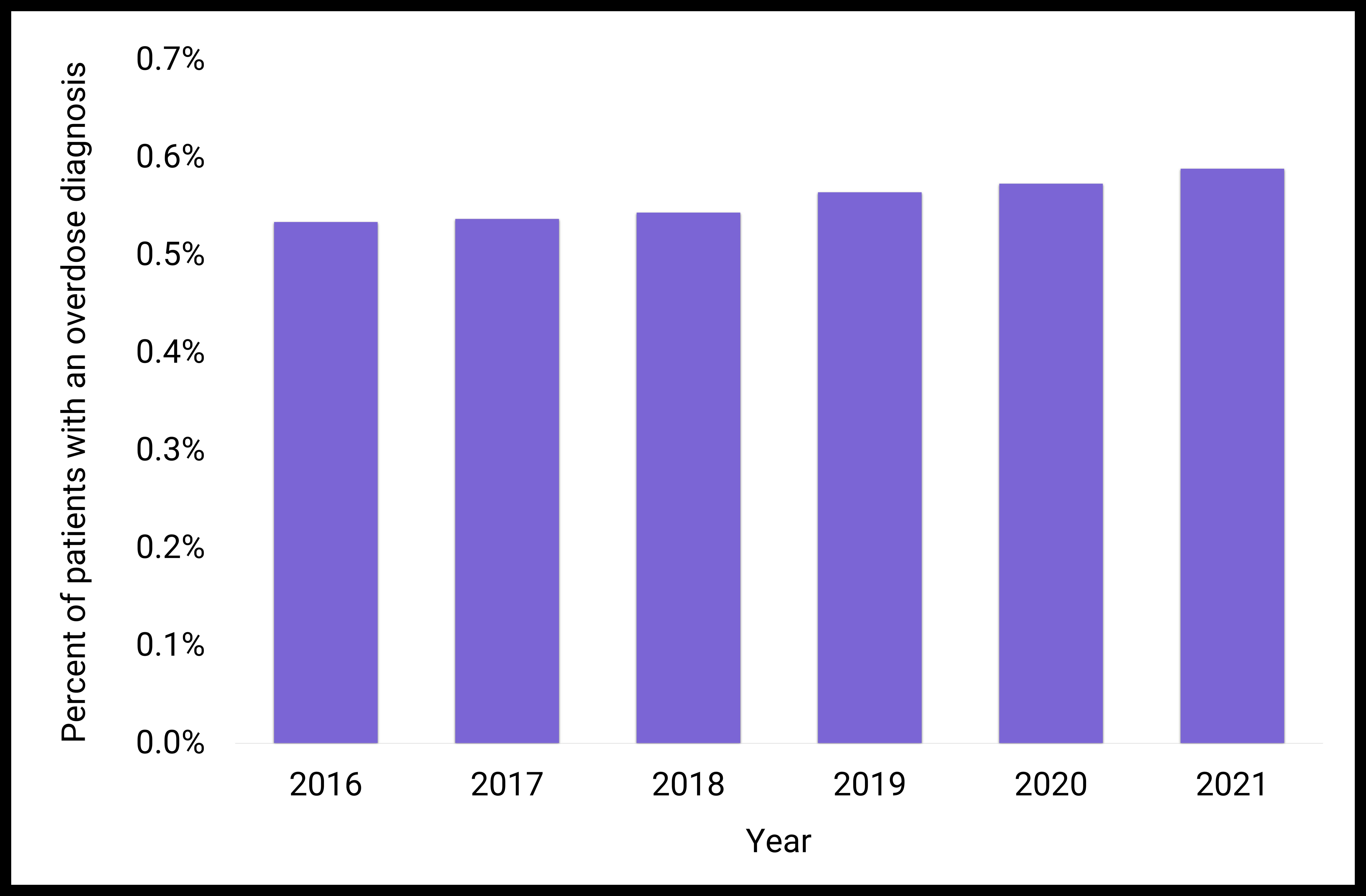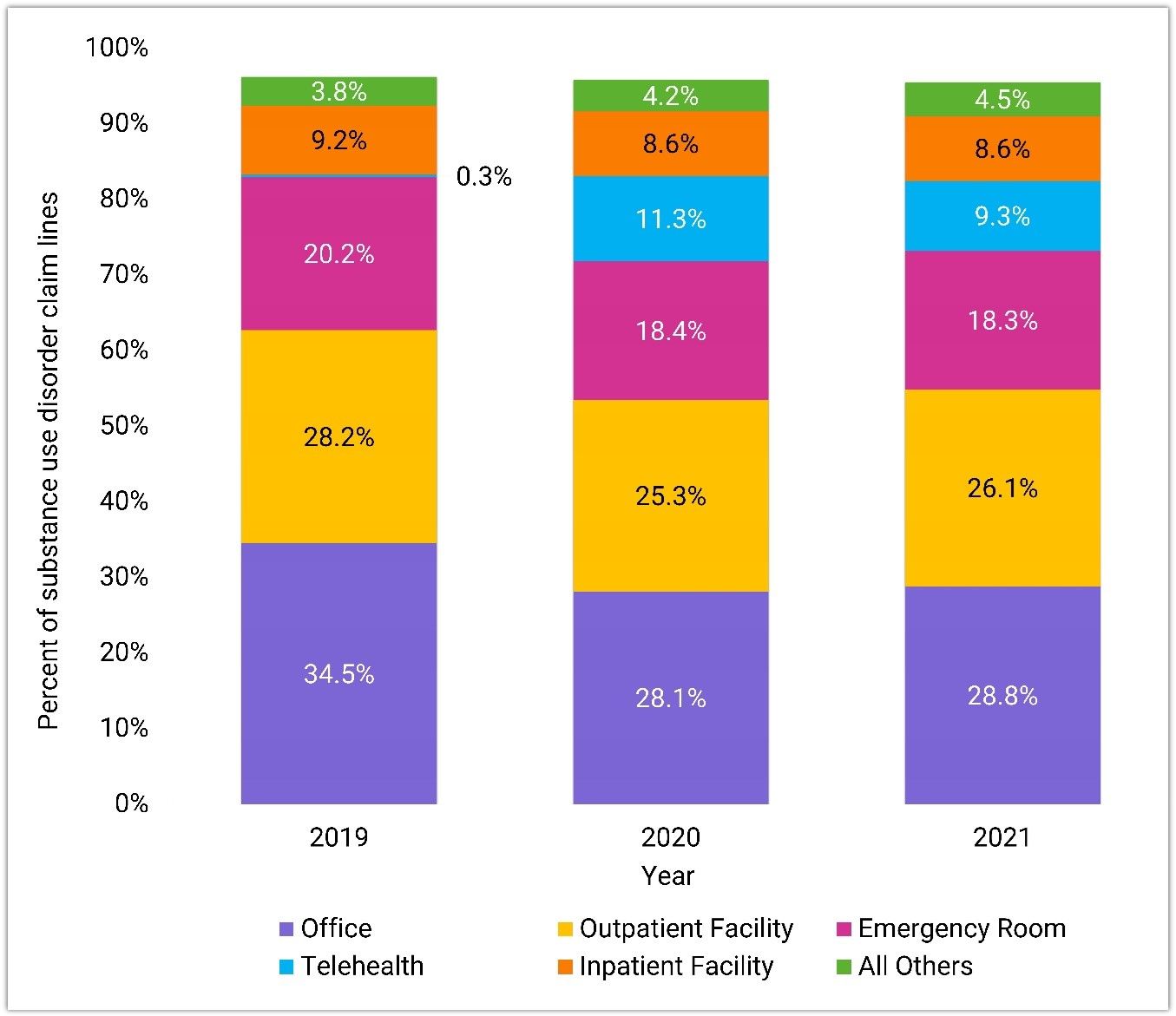- Center on Health Equity & Access
- Clinical
- Health Care Cost
- Health Care Delivery
- Insurance
- Policy
- Technology
- Value-Based Care
FAIR Health Releases Report on Substance Use Disorders, Overdoses Before, During Pandemic
One of the key findings of the report is that 42 states saw an increase in the proportion of patients with opioid and opioid-like drug overdoses compared with the total number of patients using medical services by state.
In every year of the period 2016-2021, males accounted for 62% to 63% of the gender distribution of patients with a substance use disorder diagnosis, while females made up 37% to 38%, according to a new white paper from FAIR Health.
In every year of the same period, females accounted for 60% to 61% of the gender distribution of patients with an overdose diagnosis, while males made up 39% to 40%. The white paper, released Tuesday, is entitled A Comparison of Substance Use Disorders before and during the COVID-19 Pandemic: A Study of Private Healthcare Claims.
In this report, drawing on the nation’s largest repository of private healthcare claims, FAIR Health analyzes substance use disorders and overdoses prior to the COVID-19 pandemic as compared with during the pandemic. Trends in the percentage of patients with a substance use disorder or overdose diagnosis are analyzed, as well as such aspects as age, gender, incidence, relevant substances, states, preexisting mental health conditions, venues of care and provider specialties.
Among the key findings:
From 2019 to 2021, 42 states saw an increase in the proportion of patients with opioid and opioid-like drug overdoses compared with the total number of patients using medical services by state. The increases ranged from 148.4% in Pennsylvania to 0.7% in Minnesota.
During the pandemic, the percentage of patients with a substance use disorder diagnosis decreased by 4.4%, from 3.5% of all patients in 2019 (pre-pandemic) to 3.4% in 2021 (during the pandemic). But in one age group, those 65 and older, the percentage of patients with a substance use disorder diagnosis increased 5.3%, from 3.3% of all patients in that age group in 2019 to 3.5% in 2021.
The percentage of patients with an overdose diagnosis increased 4.3%, from 0.56% of all patients in 2019 to 0.59% in 2021 (FIGURE 1).
FIGURE 1. Percent of Patients With an Overdose Diagnosis, 2016-2021
Credit: FAIR Health

Alcohol and opioids were the top 2 substances associated with substance use disorders throughout the 2019-2021 time frame. Substance use disorders involving alcohol, however, increased over that period from 47% to 52% of the distribution, while opioids fell from 25% of the distribution to 21%.
From 2016 to 2021, the share of patients with substance use disorders involving the use of stimulants (eg, amphetamines, methamphetamines) rose 36.4%, from 0.046% of all patients to 0.063%; this percentage increase exceeded those of alcohol, opioids and cannabis.
In 2021, the percentage of patients with an initial diagnosis of substance use disorder or overdose increased month over month compared with the 2 prior years.
In 2019 and 2021, New Mexico was the state with the highest proportion of patients with a substance use disorder or overdose diagnosis.
From 2019 to 2021, Nebraska was the state with the greatest increase in the proportion of patients with a substance use disorder diagnosis. Maryland was the state with the greatest increase in the proportion of patients with an overdose diagnosis.
Sixty-five percent of patients who had a substance use disorder or overdose diagnosis in 2021 had a preexisting mental health condition. Generalized anxiety disorder and major depressive disorder, in that order, were the 2 most common mental health diagnoses in this population in 2021.
The percentage of substance use disorder services rendered via telehealth rose from 0.3% in 2019 to 11.3 percent in 2020, then dropped to 9.3 percent in 2021 (FIGURE 2).
FIGURE 2. Distribution of Substance Use Disorder Claim Lines by Venue of Care, 2019-2021
Credit: FAIR Health

Psychiatrists’ share of substance use disorder claim lines increased 112.4%, from 3.9% in 2016 to 8.3% in 2021.
This study is the latest in a series of FAIR Health studies on the COVID-19 pandemic. The new study also builds upon a series of white papers released by FAIR Health involving substance use disorders, specifically opioid abuse and dependence. Previous entries in that series include:
- The Opioid Crisis among the Privately Insured
- The Impact of the Opioid Crisis on the Healthcare System
- Peeling Back the Curtain on Regional Variation in the Opioid Crisis
- Opioid Abuse and Dependence
For the new white paper, click here.
Trends in Hospital Pricing for Vulnerable Emergency Department Users, 2021-2023
December 4th 2025Self-pay emergency department prices rose significantly from 2021 to 2023, especially at for-profit and system-affiliated hospitals, highlighting growing affordability challenges for uninsured and underinsured patients.
Read More
